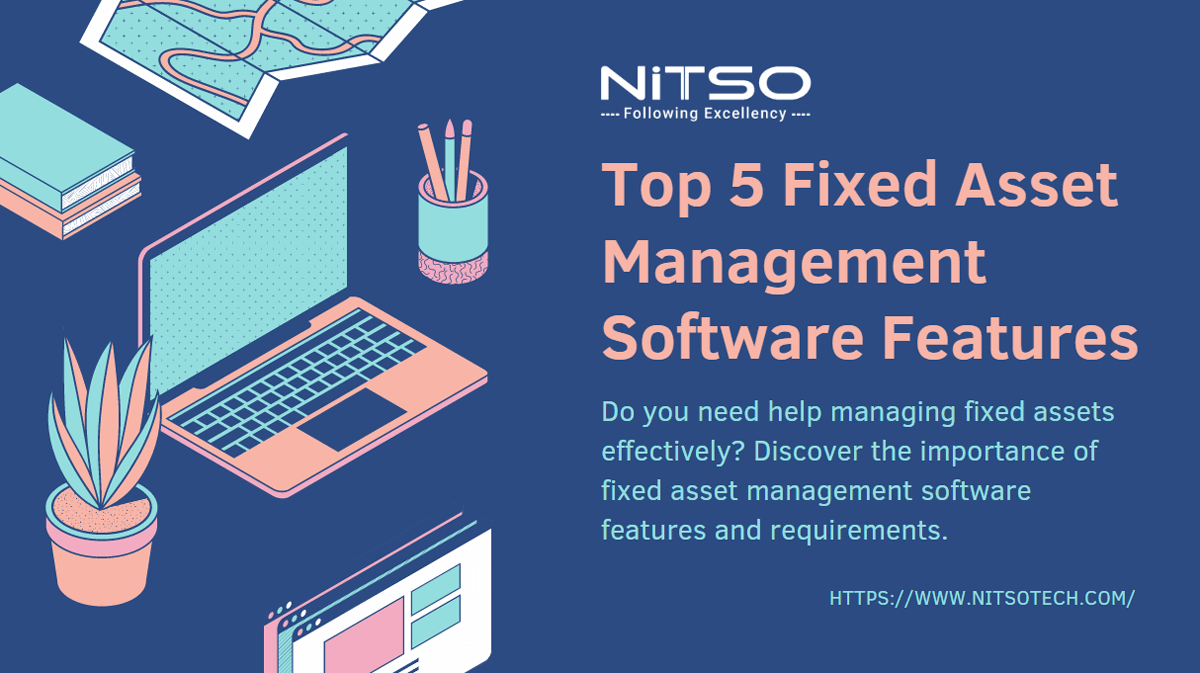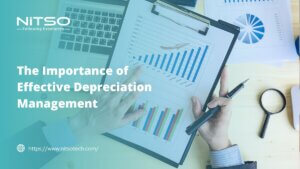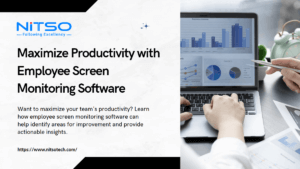Fixed asset management software is an essential tool for businesses of all sizes to keep track of their assets, manage depreciation, schedule maintenance, and gain valuable insights into their operations. With the increasing complexity of modern business operations, asset management software has become an indispensable tool for many organizations.
This article will provide an overview of the key features and requirements of fixed asset management software, with a focus on the importance of choosing the right software to meet the specific needs of your organization. We will also discuss how Nitso’s fixed asset management software meets these requirements and provides a comprehensive solution for managing your assets.
By the end of this article, you will have a better understanding of what to look for in fixed asset management software and why Nitso’s software is a reliable and effective option for your business. So, let’s dive in and explore the world of fixed asset management software!
Table of Contents
Key Features of Fixed Asset Management Software
Fixed asset management software offers a wide range of features to help organizations efficiently manage their assets. Here are the key features of fixed asset management software that every organization should consider:
1. Asset Tracking
Asset tracking is the core feature of any fixed asset management software. It allows organizations to keep track of their assets, including their location, condition, and other essential details. Asset tracking ensures that organizations have a complete view of their asset inventory, enabling them to make informed decisions regarding their assets.
2. Depreciation Management
Depreciation management is another crucial feature of fixed asset management software. It helps organizations track the depreciation of their assets over time, ensuring that they are accurately accounting for the decline in value of their assets. Depreciation management allows organizations to calculate depreciation using different methods, such as straight-line or accelerated, and generate depreciation schedules for each asset.
3. Maintenance Scheduling
Maintenance scheduling is an important feature that allows organizations to schedule regular maintenance for their assets. This helps organizations ensure that their assets are always in good working condition and reduces the likelihood of costly breakdowns. Maintenance scheduling also helps organizations extend the useful life of their assets, ultimately reducing costs in the long run.
4. Reporting and Analytics
Reporting and analytics features of fixed asset management software help organizations gain insights into their asset inventory and usage. Organizations can generate reports on asset utilization, maintenance history, and other important metrics to inform decision-making. Reporting and analytics features can also help organizations identify trends and patterns that can lead to cost savings and process improvements.
5. Integration Capabilities
Integration capabilities of fixed asset management software allow organizations to integrate their asset data with other systems, such as accounting or enterprise resource planning (ERP) software. This ensures that asset data is synchronized across different systems, reducing the likelihood of errors and improving overall data accuracy.
The importance of each of these features varies depending on the needs of the organization. However, having a comprehensive fixed asset management software that includes all of these features can provide organizations with significant benefits in terms of increased efficiency, reduced costs, and improved decision-making.
Requirements for Effective Fixed Asset Management Software
When choosing a fixed asset management system, organizations should look for specific requirements to ensure they get the most out of their investment. Here are some of the requirements that organizations should consider:
- User-friendliness and ease of use: User-friendliness and ease of use are critical factors in choosing fixed asset management software. The software should be intuitive and easy to navigate, even for users who need to become more familiar with asset management processes. A user-friendly interface can help organizations save time and reduce errors.
- Scalability: Scalability is another key requirement for effective fixed asset management software. As the organization grows, the software should be able to accommodate the increased number of assets, users, and locations without sacrificing performance. A scalable solution can help organizations avoid the need to switch to different software as they expand.
- Security and data protection: Security and data protection are crucial requirements for fixed asset management software. The software should have robust security measures to prevent unauthorized access and ensure data protection. This is especially important for organizations that deal with sensitive or confidential asset information.
- Customization options: Customization options are essential for organizations that need to tailor the software to their specific needs. The software should allow organizations to customize workflows, reports, and other features to meet their unique requirements.
- Technical support and training: Technical support and training are critical requirements for effective fixed asset management software. Organizations should choose software that provides reliable technical support and training to ensure that users can quickly resolve any issues that arise and fully utilize the software’s features.
Meeting these requirements can help organizations maximize the benefits of fixed asset management software. With a user-friendly interface, scalability, strong security measures, customization options, and reliable technical support, organizations can streamline their asset management processes, reduce costs, and make informed decisions based on accurate data.
How Nitso’s Fixed Asset Management Software Meets These Requirements
Nitso’s fixed asset management software is designed to meet the needs of organizations of all sizes and industries. Here’s how Nitso’s software meets the key features and requirements discussed in sections II and III:
- Asset tracking: Nitso’s software provides real-time tracking of fixed assets, including their location, condition, and maintenance history. The software uses barcode and RFID scanning to ensure accurate and efficient asset tracking.
- Depreciation management: Nitso’s software automates depreciation calculations, ensuring accuracy and reducing the risk of errors. The software supports multiple depreciation methods, including straight-line, declining balance, and sum-of-the-years digits.
- Maintenance scheduling: Nitso’s software allows organizations to schedule and track maintenance tasks for their fixed assets, helping to prevent breakdowns and extend the life of the assets. The software sends automated reminders and alerts to ensure that maintenance tasks are completed on time.
- Reporting and analytics: Nitso’s software provides comprehensive reporting and analytics, giving organizations insights into their fixed assets’ performance and value. The software includes customizable dashboards, charts, and graphs that can help organizations make informed decisions.
- Integration capabilities: Nitso’s software integrates with other business systems, such as ERP and accounting software, to provide a seamless asset management experience. The software also supports API integration for custom integration with other systems.
- User-friendliness and ease of use: Nitso’s software has a modern, intuitive interface that is easy to use and navigate. The software includes a knowledge base and 24/7 customer support to ensure that users can quickly resolve any issues that arise.
- Scalability: Nitso’s software is highly scalable and can accommodate organizations of all sizes and industries. The software’s cloud-based architecture allows for easy expansion and can handle large amounts of data without sacrificing performance.
- Security and data protection: Nitso’s software uses industry-standard encryption and security protocols to ensure that data is secure and protected. The software also includes data backup and recovery capabilities to prevent data loss.
- Customization options: Nitso’s software provides extensive customization options, allowing organizations to tailor the software to their specific needs. The software includes customizable workflows, reports, and dashboards, as well as the ability to create custom fields and forms.
By choosing Nitso’s fixed asset management software, organizations can streamline their asset management processes, reduce costs, and make informed decisions based on accurate data. Nitso’s software meets the key features and requirements discussed in sections II and III and provides additional benefits, such as ease of use, scalability, and extensive customization options.
Conclusion
In conclusion, fixed asset management software is crucial for organizations that want to effectively manage their fixed assets, reduce costs, and improve operational efficiency. The key features of fixed asset management software, such as asset tracking, depreciation management, maintenance scheduling, reporting and analytics, and integration capabilities, provide organizations with the tools they need to make informed decisions and optimize their asset management processes.
When choosing fixed asset management software, organizations should look for user-friendliness and ease of use, scalability, security and data protection, customization options, and technical support and training. These requirements help organizations maximize the benefits of asset management software and ensure that they are getting the most value from their investment.
Nitso’s fixed asset management software meets these requirements and provides additional benefits, such as real-time asset tracking, automated depreciation calculations, customizable reporting and analytics, and extensive customization options. Nitso’s software is designed to be user-friendly and scalable, with industry-standard security and data protection protocols and 24/7 customer support.
In summary, if you are looking for a reliable and effective option for fixed asset management, Nitso’s software is a great choice. With its comprehensive features and capabilities, Nitso’s software can help organizations streamline their asset management processes, reduce costs, and make informed decisions based on accurate data.
FAQs (Frequently Asked Questions)
What is the best fixed asset tracking software on the market?
There are several fixed asset tracking software options available on the market, each with its own unique features and capabilities. The best software for your organization will depend on your specific needs and requirements. Some popular options include Nitso, Asset Panda, UpKeep, and EZOfficeInventory.
How beneficial is an Asset tracking management system?
An asset-tracking management system can be incredibly beneficial for organizations that want to manage their fixed assets effectively. It provides real-time tracking of asset location and status, helps reduce the risk of loss or theft, streamlines maintenance and repair processes, and provides accurate data for decision-making. Overall, an asset-tracking management system can help organizations reduce costs and improve operational efficiency.
How do I build a workflow for asset management?
Building a workflow for asset management involves several key steps. First, you will need to define your asset management objectives and goals. Then, you can create a process map that outlines the various stages of asset management, from acquisition to disposal. Once you have a clear process map, you can start identifying the specific tasks and responsibilities that are required for each stage of the process. Finally, you can develop standard operating procedures (SOPs) and workflows that outline the steps and procedures for managing assets.








0 Comments